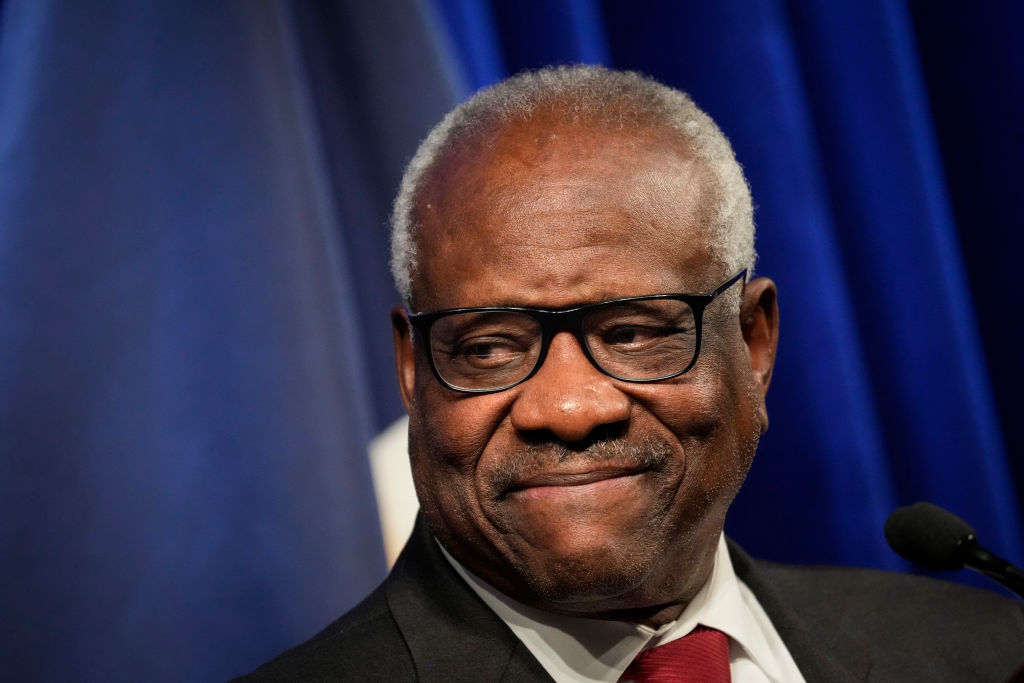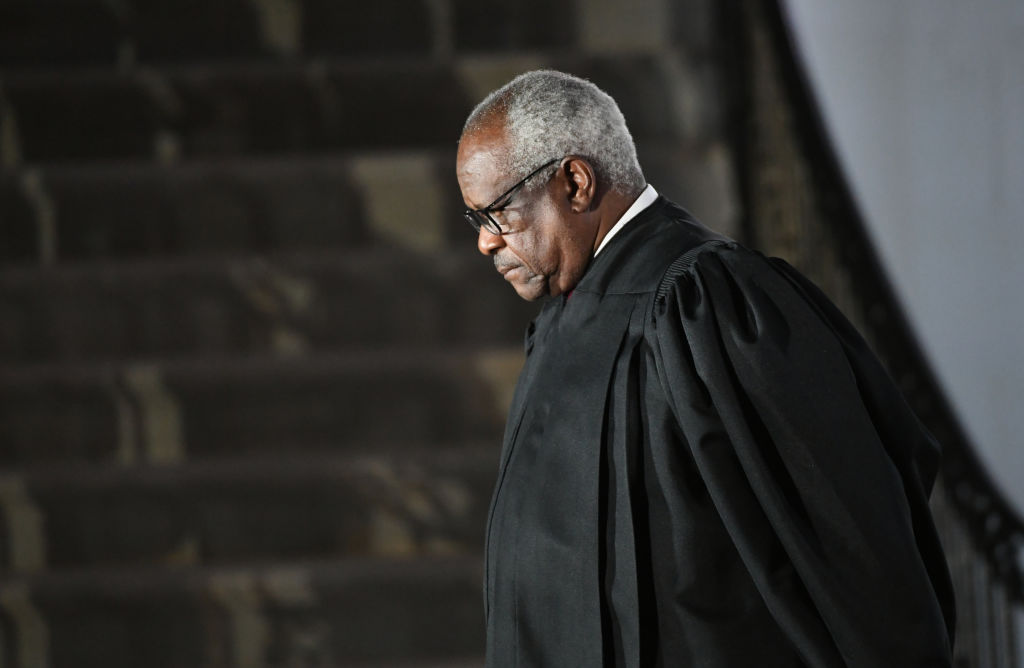No Supreme Court justice hammered affirmative action harder than Clarence Thomas when hearing arguments on Halloween. The High Court heard two cases, both on the same fundamental question: whether higher education may discriminate in favor of black or brown applicants, and against whites and Asians. Justice Thomas had plenty of company challenging the legal race discrimination the Court has permitted since 1973.
Diversity Is Our Strength
 Justice Thomas told North Carolina Solicitor General Ryan Park, “I’ve heard the word ‘diversity’ quite a few times, and I don’t have a clue what it means. It seems to mean everything for everyone.” His questioning, apart from his colleagues, attacked the heart of affirmative action: the diversity benefit often cited but rarely explained. The justice said:
Justice Thomas told North Carolina Solicitor General Ryan Park, “I’ve heard the word ‘diversity’ quite a few times, and I don’t have a clue what it means. It seems to mean everything for everyone.” His questioning, apart from his colleagues, attacked the heart of affirmative action: the diversity benefit often cited but rarely explained. The justice said:
“I didn’t go to racially diverse schools, but there were educational benefits. And I’d like you to tell me expressly, when a parent sends a kid to college, that they don’t necessarily send them there to have fun or feel good or anything like that; they send them there to learn physics or chemistry or whatever they’re studying. So tell me what the educational benefits are.”
 Park’s response did not impress Thomas, who replied, “I’ve heard similar arguments in favor of segregation, too.” He wasn’t the only one who reminded the litigants that discrimination in higher education started with less than heroic beginnings: Harvard’s campaign against Jewish applicants. The school pioneered the use of a holistic examination of candidates to discriminate against Jews indirectly. Now school officials swear on a stack of bibles that race is simply a factor, like playing the violin or being from a farm family, that adds to the mix of magical diversity they desire. But, unlike ethnicity, one’s musical ability or rural upbringing don’t have check boxes on the applications. And the numbers give the lie to the claim there is no quota.
Park’s response did not impress Thomas, who replied, “I’ve heard similar arguments in favor of segregation, too.” He wasn’t the only one who reminded the litigants that discrimination in higher education started with less than heroic beginnings: Harvard’s campaign against Jewish applicants. The school pioneered the use of a holistic examination of candidates to discriminate against Jews indirectly. Now school officials swear on a stack of bibles that race is simply a factor, like playing the violin or being from a farm family, that adds to the mix of magical diversity they desire. But, unlike ethnicity, one’s musical ability or rural upbringing don’t have check boxes on the applications. And the numbers give the lie to the claim there is no quota.
Don’t Believe Your Lying Eyes
Justice Neil Gorsuch quoted Harvard figures from 2006 through 2018. The percentage of Asian applicants accepted there never varied from between 17% to 20% in a dozen years. He said, “every year, the percentage is the same. And the US government below said this manifest steadiness speaks for itself.” That is a reference to how this case started in the lower courts when Donald Trump was president. Joe Biden’s Justice Department has demanded more race-based discrimination, while Trump’s argued the stats plainly showed impermissible quotas were in place.

(Photo by Drew Angerer/Getty Images)
Cameron T. Norris, a former Thomas clerk, was in Court arguing for Students for Fair Admission (SFFA), a non-profit created by activist Edward Blum, to challenge affirmative action. Norris noted that Harvard doesn’t appear to value ideological diversity, with only about 9% of the classes comprised of conservatives. And he reminded the Court that Harvard and the University of North Carolina both favor rich applicants. He said the average UNC student comes from a family making $153,000, which is $100,000 more than the state’s $53,000 median income.
Another question before the Court is whether a school may reject an available race-neutral admissions scheme without proving that such a program would damage the academic quality or educational benefits offered. However, it seems the institutions want to use race no matter what, and when pressed to say when that will stop, the answer is never. That answer may itself bring the demise of legal racial discrimination in higher education. When the Court upheld the practice in the 2003 landmark Bollinger v. Gratz decision, it said such programs must be limited in time. If now is not the time to end affirmative action, when will be?
The Court is expected to issue a ruling in the two cases, Students for Fair Admissions v. UNC and Students for Fair Admissions v. Harvard, in the new year. You can listen to Court audio here on Liberty Nation.




